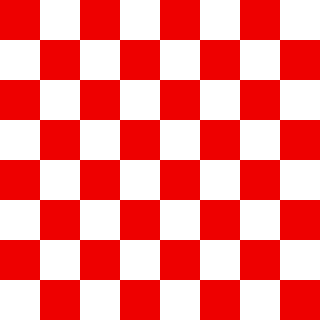 W
WThe Croatian checkerboard or chequy is the national symbol of Croatia and Croats, it covers the main shield of Croatian coat of arms above which is the crown with five smaller shields. Squares are always arranged correctly and they are red and white. It is considered to be one of the oldest national symbols in Europe.
 W
WBaltazar Adam Krčelić was a Croatian historian, theologian and lawyer. After Vitezović, he was the most prominent figure in the Croatian cultural life of the time.
 W
WThe Pontifical Croatian College of St. Jerome is a Catholic college, church and a society in the city of Rome intended for the schooling of South Slav clerics. It is named after Saint Jerome. Since the founding of the modern college in 1901, it has schooled 311 clerics from all bishoprics of Croatia.
 W
WSaint Jerome of the Croats is the national Catholic church of Croatia on Via Tomacelli in the Campus Martius of Rome. It is now a chapel of the Pontifical Croatian College of Saint Jerome in Rome and is only open to visitors by arrangement with the College.
 W
WThe Tanais Tablets are two tablets dated late 2nd-3rd century AD, and written in Greek from the city of Tanais, in the proximity of modern Rostov-on-Don, Russia. At the time, Tanais was composed of a mixed Greek, Cimmerians, Goths and Sarmatian population. The tablets are public inscriptions which commemorate renovation works in the city. One of the tablets, Tanais Tablet A, is damaged and is not fully reconstructed. The other one, Tanais Tablet B, is fully preserved and is dated to 220 AD.
 W
WWhite Croatia is the region from which part of the White Croats supposedly emigrated to the Western Balkans. Some historians believe that, after the migration of the White Croats in the 7th century, their former homeland gradually lost its primacy and was influenced by other Slavic peoples, such as Czechs and Poles. Others say there was never a distinct polity known as White Croatia. According to the medieval Chronicle of the Priest of Duklja, another area referred to as White Croatia was located along with Red Croatia in Dalmatia. In the Slavic tradition, the colour white designates "north", thus the name of the region means "Northern Croatia". The area to the west of White Croatia was known as White Serbia.
 W
WWhite Croats, or simply known as Croats, were a group of Early Slavic tribes who lived among other West and East Slavic tribes in the area of modern-day Lesser Poland, Galicia, Western Ukraine, and Northeastern Bohemia. They were documented primarily by foreign medieval authors and managed to preserve their ethnic name until the early 20th century, primarily in Lesser Poland. It is considered that they were assimilated into Czech, Polish and Ukrainian ethnos, and are one of the predecessors of the Rusyn people. In the 7th century, some White Croats migrated from their homeland, White Croatia, to the territory of modern-day Croatia in Southeast Europe along the Adriatic Sea, forming the ancestors of the South Slavic ethnic group of Croats.